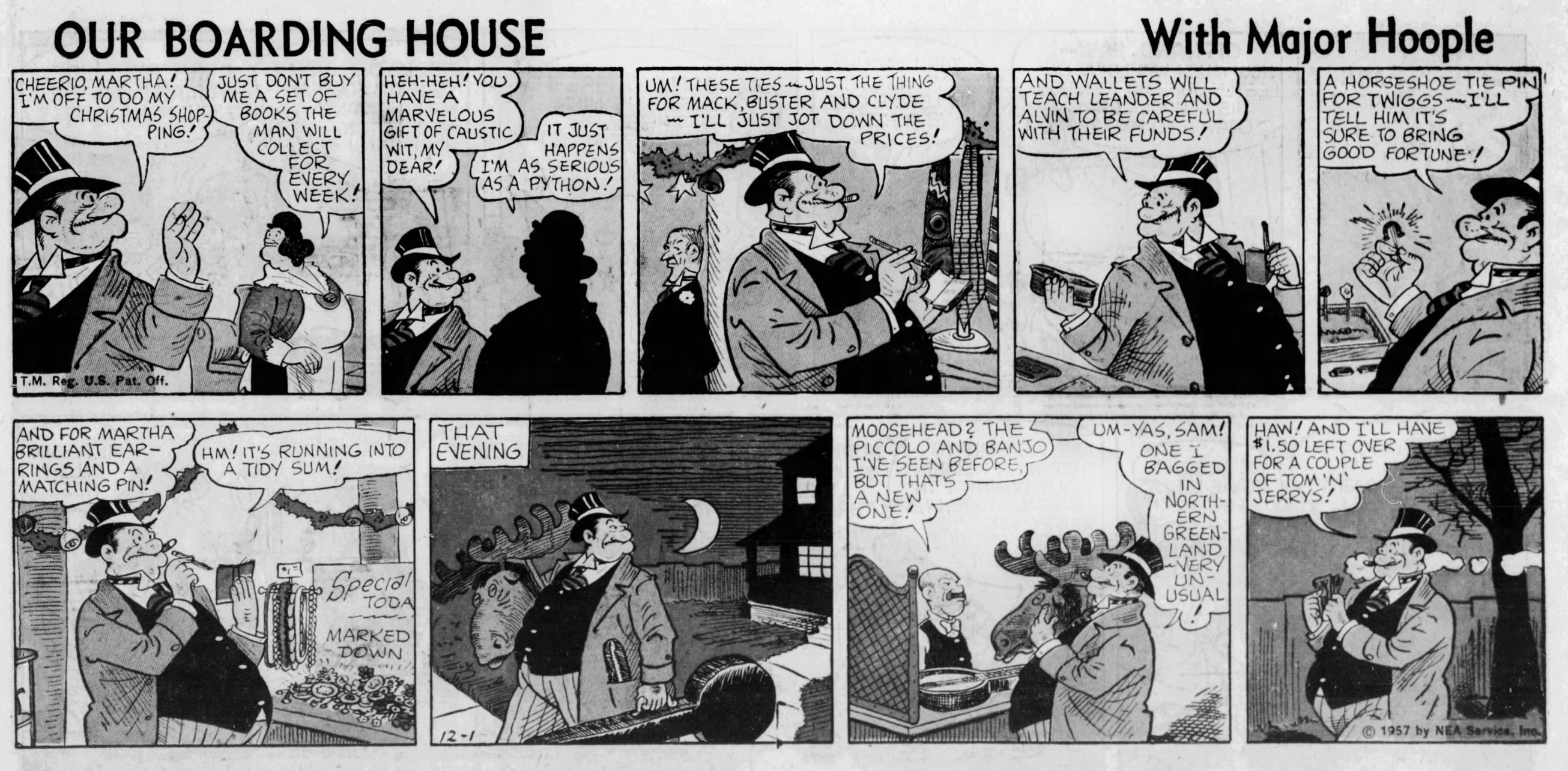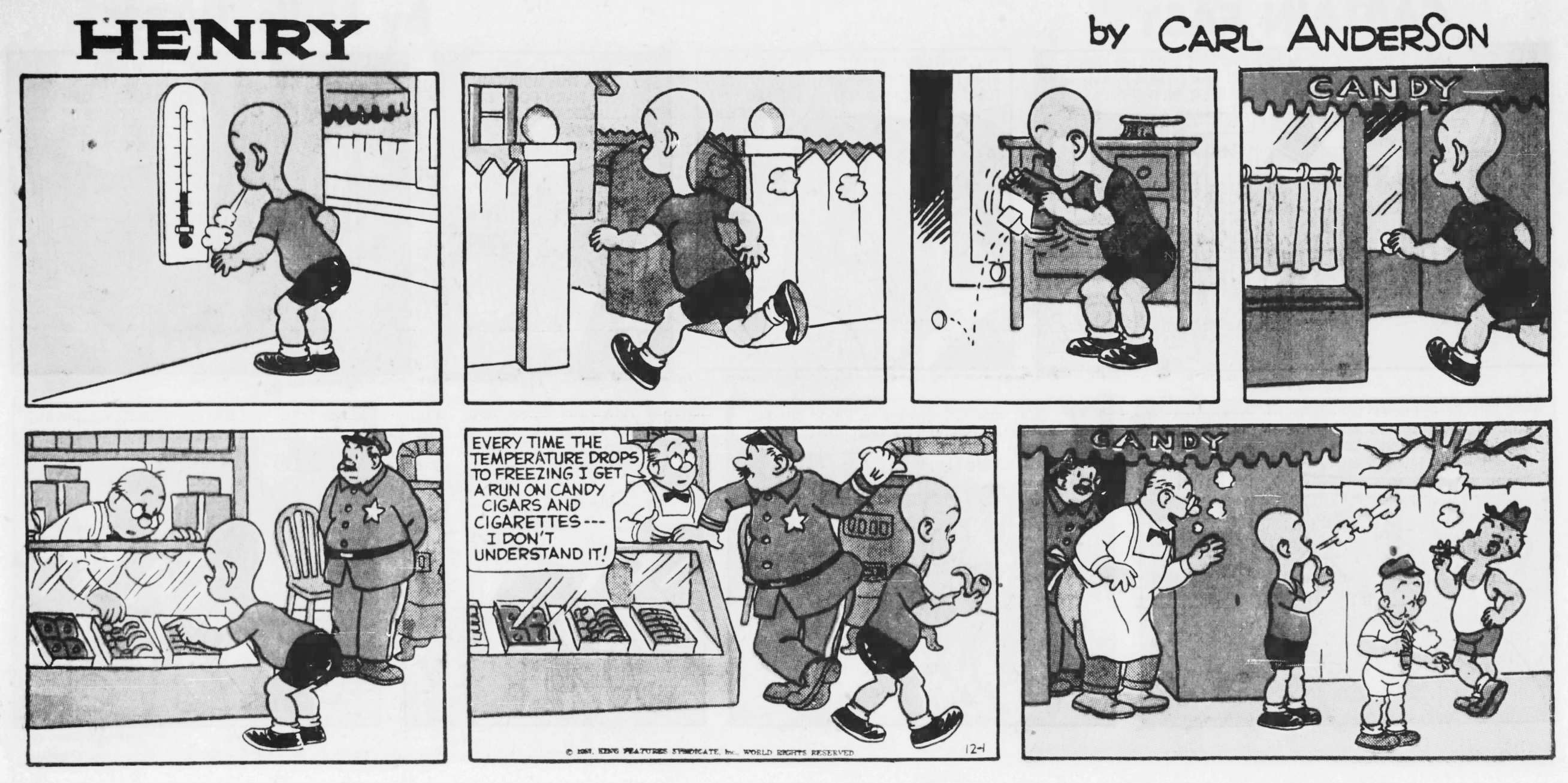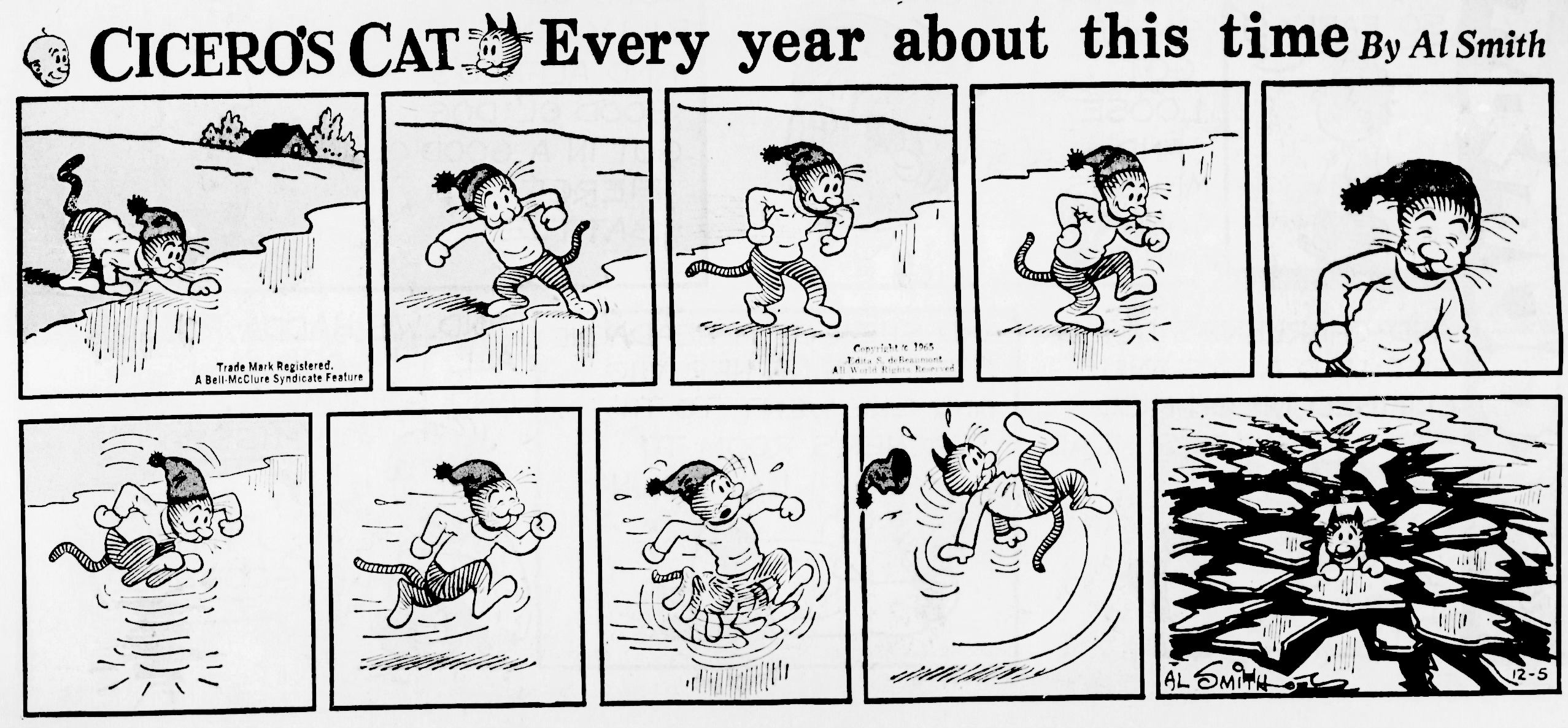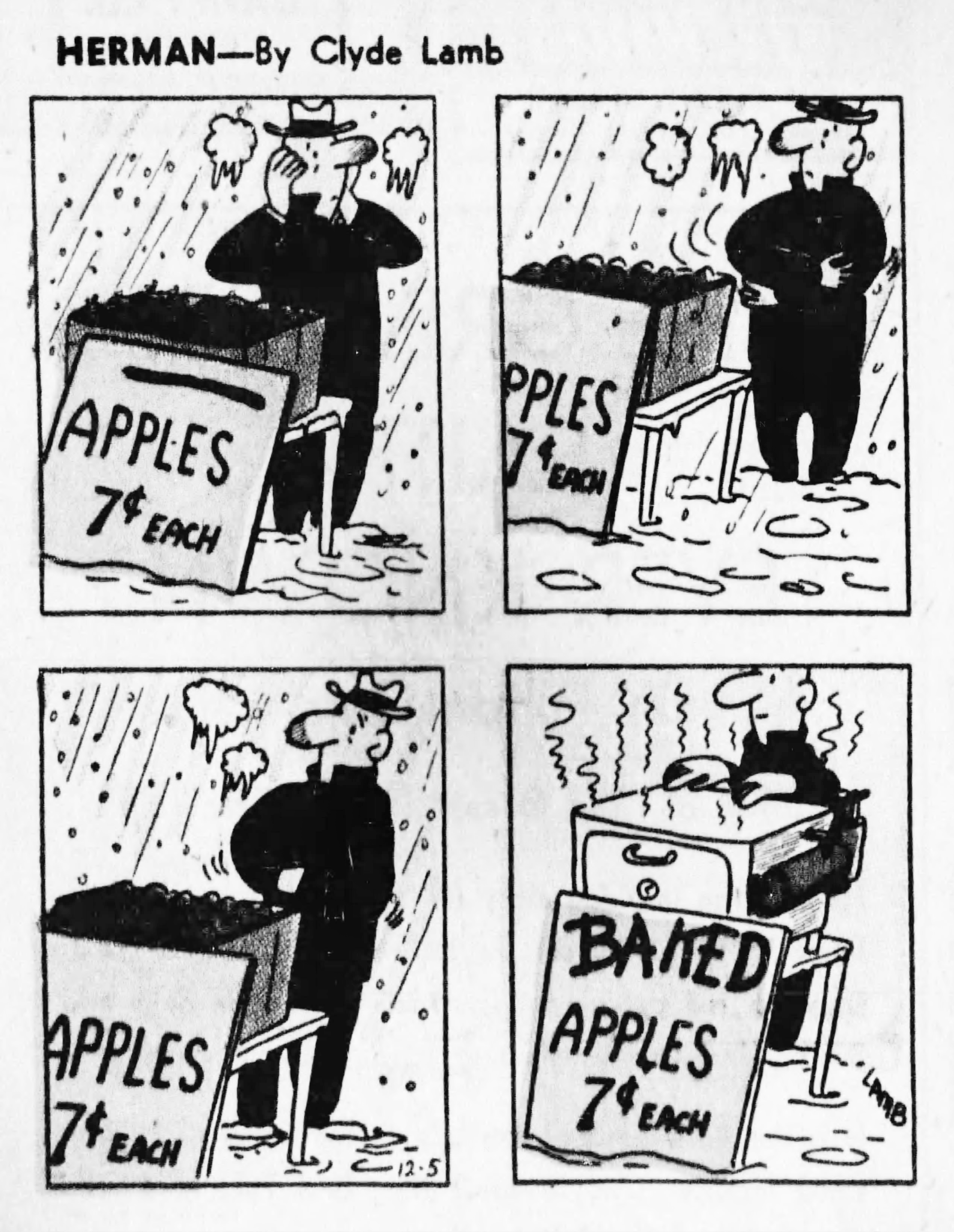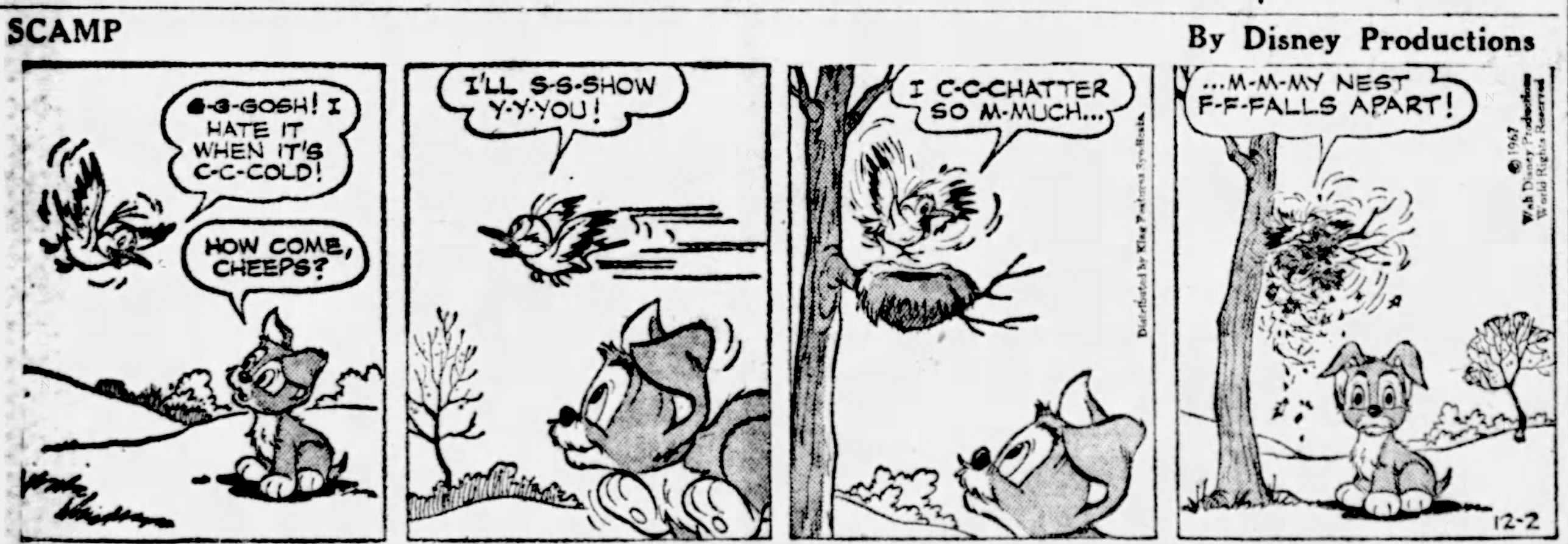Click the image to see a larger version.
It looks like Mr. has taken Thornsby's advice from yesterday and read A Christmas Carol, which has transformed him into Ebenezer Scrooge from the end of the story, although only briefly. If the effect has worn off, perhaps Mr. could take some inspiration from some of Dickens' other Christmas books. Specifically, "The Cricket On The Hearth" centers around a husband and wife, so it may help him improve his relationship with Mrs.


